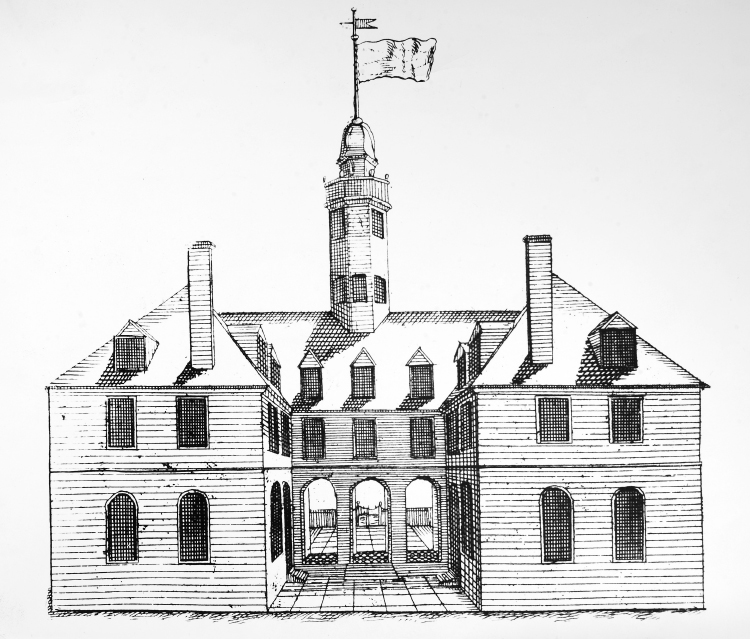Exploring American Histories: Printed Page 116
Exploring American Histories, Value Edition: Printed Page 103
Dissent and Protest

Protests against colonial elites multiplied from the 1730s on. The issues and methods varied, but they indicate a growing sense of political and economic autonomy among North American colonists. Some protests focused on royal officials like governors and Royal Navy captains; others focused on local authorities, merchants, or large landowners. Whatever the target of resistance, protests demonstrated colonists’ belief that they had rights that were worth protecting, even against those who held legitimate authority. Just as importantly, dissenters included the poor, women, and African Americans as well as property-owning white men.
Access to reasonably priced food, especially bread, inspired regular protests in the eighteenth century. During the 1730s, the price of bread—a critical staple in colonial diets—rose despite falling wheat prices and a recession in seaport cities. Bread rioters attacked grain warehouses, bakeries, and shops, demanding more bread at lower prices. Like similar protests in Europe, these riots were often successful in the short run, though eventually prices began to rise again. They were often led by women, who were responsible for putting bread on the table; thus when grievances involved domestic or consumer issues, women felt they had the right to make their voices heard.
Public markets were another site where struggles over food led to collective protests. In 1737, for instance, Boston officials decided to construct a public market and charge fees to farmers who sold their goods there. Small farmers, who were used to selling produce from the roadside for free, clashed with officials and with larger merchants over the venture. Many Boston residents supported the protesters because the market fees would lessen competition and raise prices for consumers. When petitions to city officials had no effect, opponents demolished the market building and stalls in the middle of the night. Local authorities could find no witnesses to the crime. Like bread riots, the success of this protest was short-lived. Officials built another market; nonetheless, the protest had demonstrated the collective power of those with limited resources.
Access to land was also a critical issue in the colonies. Beginning in the 1740s, protests erupted on estates in New Jersey and along the Hudson River in New York over the leasing policies of landlords as well as the amount of land controlled by speculators. When tenants and squatters petitioned colonial officials and received no response, they took collective action. They formed groups, targeted specific landlords, and then burned barns, attacked livestock, and emptied houses and farm buildings of furniture and tools. Eventually, they established regional committees to hear grievances and formed “popular” militia companies and courts to mete out justice to those who refused to renegotiate rental agreements and prices. When landlords and colonial officials called out local militia to arrest the perpetrators, they failed to consider that militia members were often the same poor men whose protests they ignored.
In seaport cities, a frequent source of conflict was the impressment of colonial men who were forcibly drafted into service in the Royal Navy. British officials, caught up in nearly continuous warfare in Europe, periodically raided portside communities in order to fill their complement of sailors. Not only sailors but also dockworkers and men drinking at taverns along the shore might find themselves suddenly inducted into military service. Facing high mortality rates, bad food, rampant disease, and harsh discipline on navy ships, these impressed men were unwilling to wait while colonial officials complained to the British government about the labor shortages that impressment caused. Instead, they fought back. In 1747 in Boston, a general impressment led to three days of rioting. An observer noted that “Negros, servants, and hundreds of seamen seized a naval lieutenant, assaulted a sheriff, and put his deputy in stocks, surrounded the governor’s house, and stormed the Town House (city hall).” Such riots did not end the system of impressment, but they showed that colonists would battle those who sought to deprive them of their liberty.
The religious upheavals and economic uncertainties of the 1730s and 1740s led colonists to challenge colonial and British officials with greater frequency than in earlier decades. But most protests also accentuated class lines as the poor, small farmers, and craftsmen fought against merchants, landowners, and local officials. Still, the resistance to impressment proved that colonists could mobilize across economic differences when British policies affected diverse groups of colonial subjects.